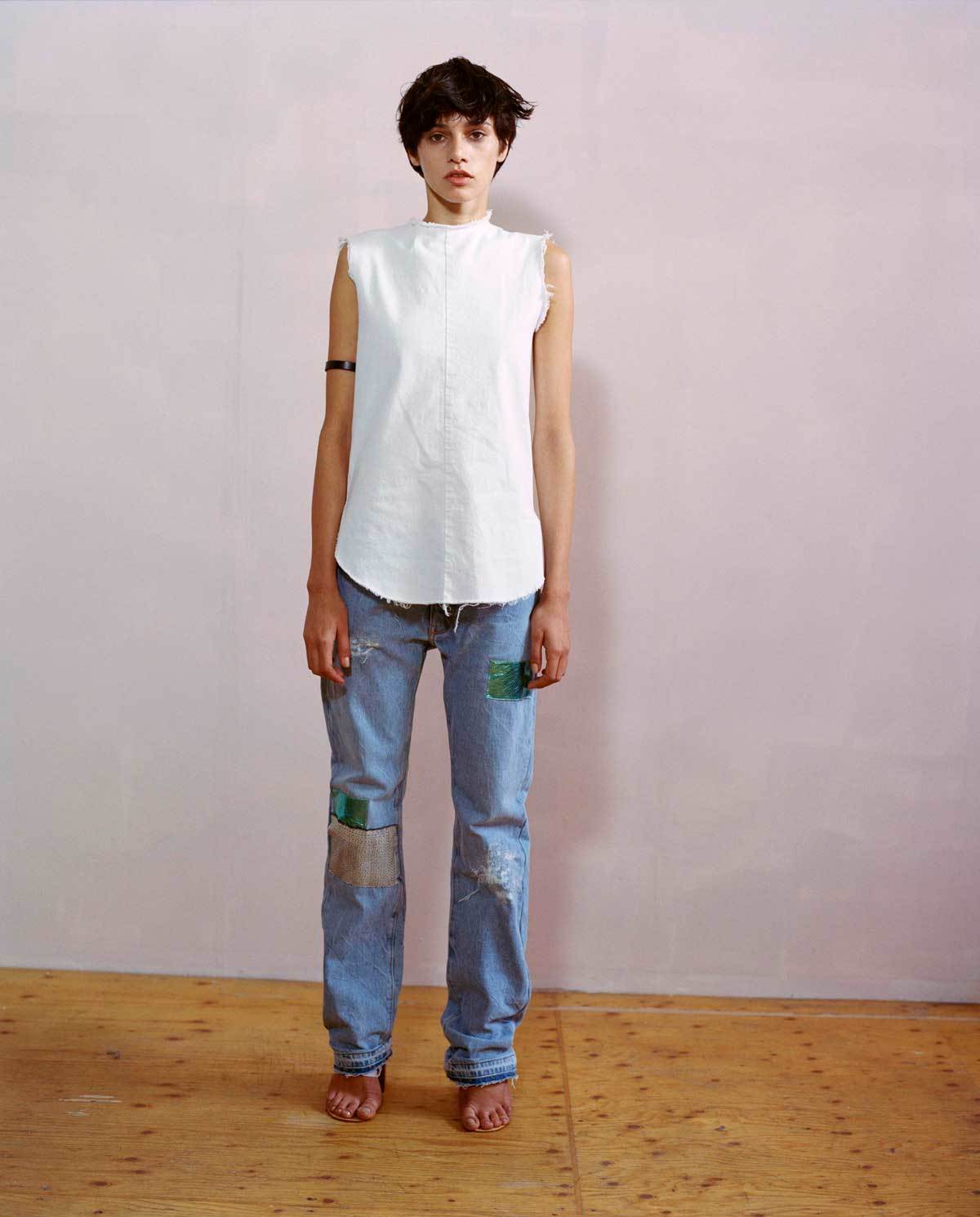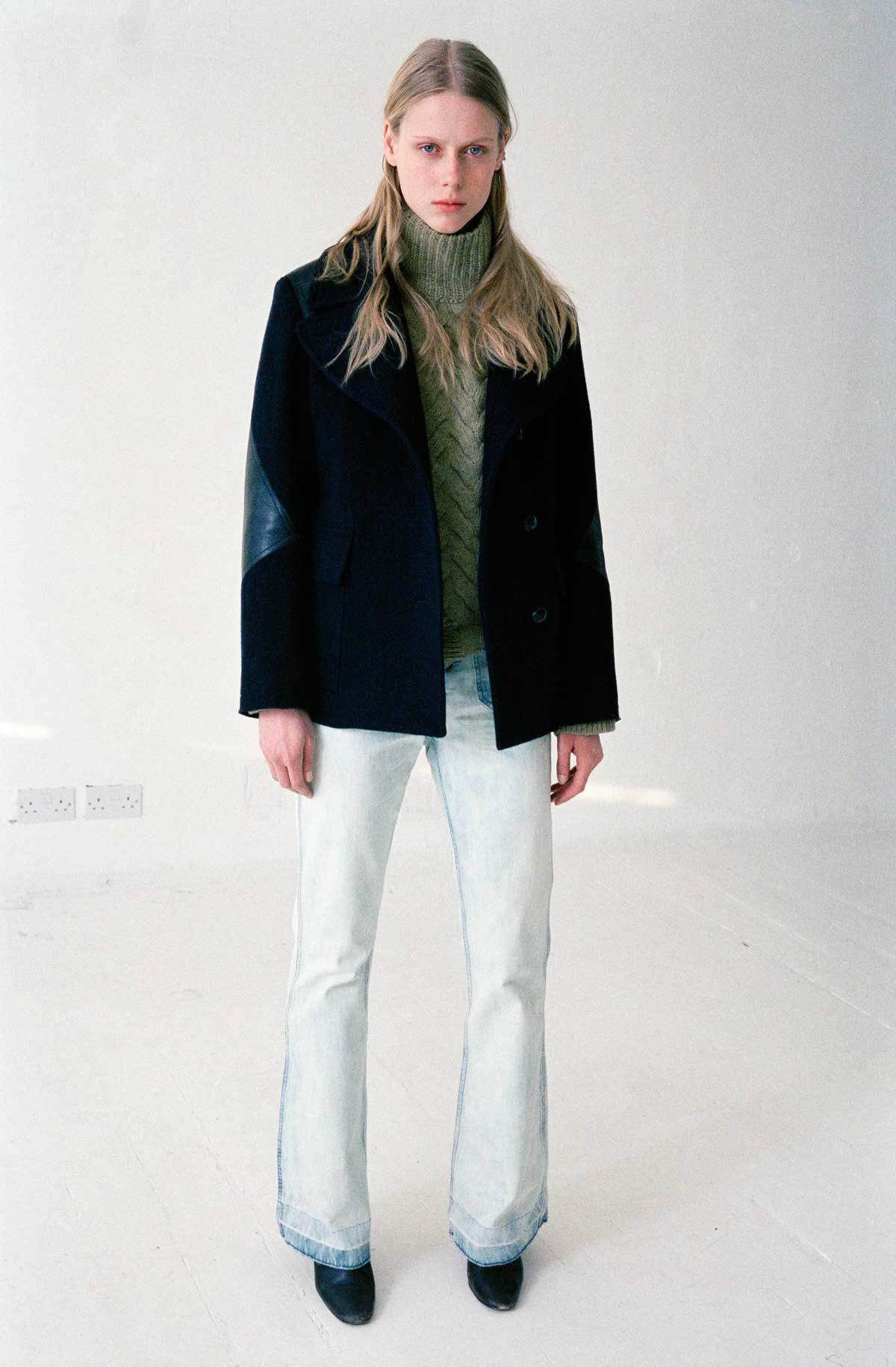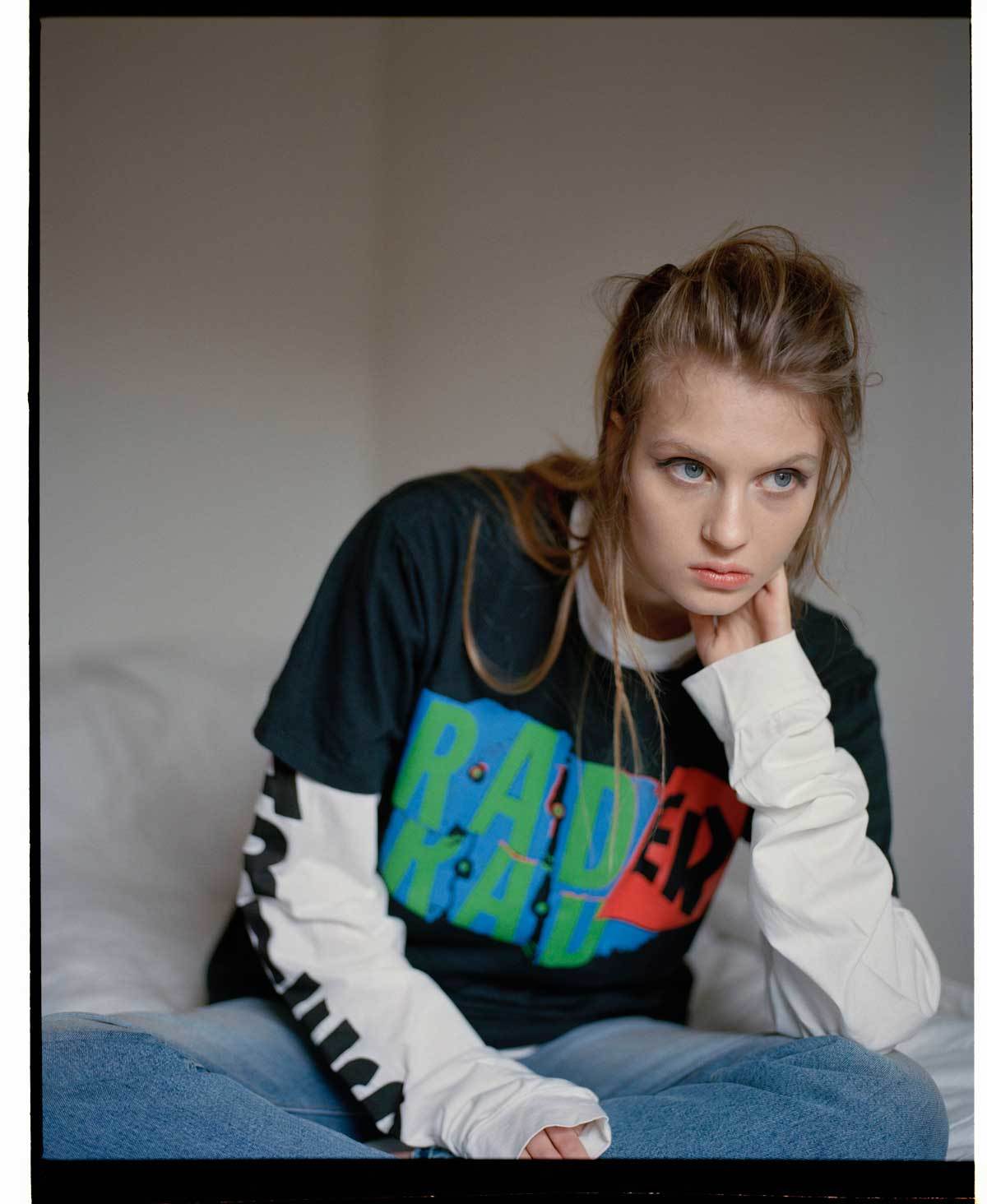With a career that started out in street and skatewear, Aries‘ creator Sofia Prantera is perfectly placed to talk about the effect of menswear on women’s style and her own label’s aesthetic. Never one to wear make-up and high heels, she was instead drawn to the scene surrounding London’s Slam City Skates and the clothing that the all-male crew were sporting. We caught up with her to talk about “tomboy” style — a word she’s not even particularly fond of.
Were you a tomboy yourself?
I’m not sure about the term, because now I’ve got a boy and a girl and you realize that by saying “tomboy” you’re dividing the gender. Your daughter might think that by wearing jeans she behaving like a boy and I think it made me think that I prefer the gender-fluid thing, like younger generations who really pick and choose things that they like. It’s merging in a way. I met this guy who defined himself as gender-fluid the other day and he was amazing: he was 22 and dressed like a younger me would dress but he had nail polish and a tiny bit of make-up. He was dressed like a girl who would dress like a boy. I just thought, ‘how much easier the world would be if there wasn’t such a thing like, this is male, this is female?’ I never really wanted to dress like a boy but was attracted by cool guys and I wanted to look like that. I didn’t want to look like the girl with the lipstick and the bra.
Why did you prefer the menswear look?
There’s a sort of nonchalance about dressing like a man, or a comfortableness that there isn’t in womenswear. People are definitely going towards that look anyway. Hopefully in the near future people won’t see it as two separate things. I get annoyed by school uniforms and the fact that girls wear a skirt and boys wear trousers.
I was watching tennis on the TV recently and it just seems so weird and sexist that girls are still playing tennis in these tiny skirts with their knickers on show.
When you’re a girl, you’re really aware of that. I didn’t go to a school with uniforms, so I was really shocked by the fact that all the girls here would have to wear this outfit whether they felt that way or not. My daughter definitely doesn’t feel that way. She’s always in jeans and baggy t-shirts and we have to shop in the boys department in H&M because if you go to the girls department, it’s all sparkles.

How old were you when you started being drawn to traditionally male clothes?
I think always; I never remember wanting to wear a skirt. When I was about eight or nine, I always wanted to look like a guy. I really like the way clothes hang on your body if you’re a guy and that way of looking more casual. But that doesn’t mean you wouldn’t wear it with a really miniscule transparent top. My father was really against any sort of femininity, which was weird. He was like, ‘Oh my god don’t have your nails done.’ I can’t wear nail polish — I don’t like it. I like it on other other people. I always considered women cool when they looked quite boyish, or when they don’t care about being overtly sexual.
There has been that whole boyfriend jeans thing. What did you make of that? It’s a similar idea, but feels different somehow.
I thought that was awful! [laughs] I found that — and this is more technical — when the boyfriend jeans came in, people were defining a baggier fit as a boyfriend jean. But actually most of the high street was still cutting it really low in the crotch. A real boyfriend jean would be really long crotch and a really low waist. I used to wear Levi’s 501s.
In what ways do you incorporate traditionally male tailoring into Aries?
All our stuff is unisex — well, not everything, because we do dresses, which are actually feminine — but all the basic garments are very menswear. All our stuff closes left over right, which is the men’s style. I’m used to wearing men’s clothes, so I don’t like them in right over left. I don’t think there should be a difference. The other thing I hate is darts. I can’t stand darts! Unless you’re doing something that’s extremely tailored. Most of the high street will cut a woman’s shirt that’s essentially a man’s shirt with a dart. Why would you have a dart?
How much have your customers expressed their desire to dress in a not obviously feminine way?
I look at all the girls that follow us and a lot of the people wearing it are quite boyish. I think younger women are much less hung up over it now. I think they’re attracted to what we do because they’re not overly feminine garments.
It must be much more freeing not feeling like you’re pandering to a male idea of femininity or what’s sexy.
It just felt safer maybe. I grew up in Italy and Italian men are very predatory. I remember going out as a 15-year-old. Me and my sister had bleached hair and you would get men running up to you. It was disgusting [laughs]. And when you’re dressed for your peers to understand and not for the rest of the world, you feel better. You’re more protected.
It must have felt quite empowering trying to fight against that Italian gender dynamic through your clothing choices.
Yeah and when I came here [to London] when I was 20 to study, I realized that men have a much more grown up idea of what a woman is. They weren’t attracted by stereotypes of women; they were attracted by women that looked real, and that was what attracted me to being here and to the fashion here. In Italy, it’s just sometimes so obvious: you can look like the back end of a bus, but if you put a mini skirt on you’ll literally get so much attention. And that was really quite scary as a young person.
I actually had Italian friend and when she moved to France, she found it really stressful that no men were paying her attention. But not the case for you!
It was just so liberating that people didn’t notice you or turn around 20 times. I think a lot of women in this generation re-conquered some of the very overtly feminine things and have studied them and used them in a different way. I enjoy it and see it as a powerful thing.

Which women’s style have you looked to?
It could be a bit controversial, but Charlotte Rampling in The Night Porter was one that I remember as a younger person. It’s not a great film, but she just looked so incredible. There was that kind of hardness yet femininity that came across. I liked Patti Smith when I was very young. I remember seeing her in poses when she had the braces and high-waisted jeans but again she was really feminine. If you look in all the books like Robert Mapplethorpe, she was very sexual and often naked, but it was quite a “tomboy” way of being sexual.There’s a power that some girls have, and she has it.
Any others?
I saw the i-D video of Natalie Westling skating and I just fell in love with her. I have these things every now and then when I see a girl and I think, “Mmm that’s my girl!” We’ve an Italian girl that models for me at the moment. She’s like that. You see her coming in and she’s just cool. There’s Glacier Girl, who was wearing one of our sweatshirts in one of your shoots and I think she looks really cool.
People have often made assumptions that girls who were more drawn to masculine or boyish things would be lesbians. Did you get that?
Yeah! With me and my best friend at school, everyone always said, “Oh they’re going out together. They’re lesbians.” I think it’s a stupid assumption. I think the faster the world realizes there isn’t a stereotype the better.
Was there any movement or designer you looked to for the kind of style you liked?
Punk was probably the first subculture where women and men were dressed quite similarly and that was when I was growing up. It was an inspiring thing because with the teddy boys before, the girls dressed in one way and the boys dressed in another way. With most subcultures, it was always about the way the boys dressed and I never wanted to look like one of those 50s girls. I guess Vivienne Westwood was very gender neutral with what she did. All her stuff was worn by men and women. As a brand it’s really difficult to do things that are genderless because it’s really difficult to sell them to the right department — the menswear or the womenswear side. But I’m sure it’s gonna change. Sometimes people have to be told that they can buy something.
Do you think we’ll ever become fully genderless?
I think we’re probably far away from becoming completely genderless, but there are lots of younger 20-year-olds that see the sense of genderlessness, especially in fashion. Even in the skate world, there are lots. Hetty Douglas is an artist but she’s the only girl to have ever worked in Supreme. She looks amazing. She only wears men’s clothing, but she’s very beautiful, and very boyish. She’s a bit of a poster girl. She won’t wear any make-up. When I worked at Slam, I was the only girl there and all the guys were really straight. I always feel like streetwear is much more sexist than fashion. It’s driven by men, it’s very blokey. When I was much younger I always found myself in situations with all guys.
